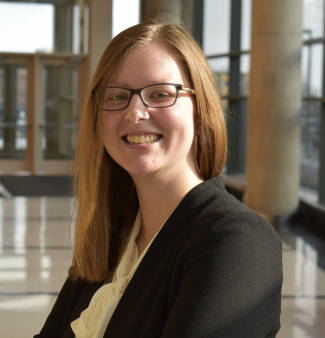Catherine N. Steffel, MS, NIH predoctoral fellow at the University of Wisconsin-Madison Department of Medical Physics, contributed this post.
The summer before my senior year of undergrad, I was combing through the course catalog, hoping to add more than quantum mechanics to my schedule, when I discovered the Department of Medical Physics at my university.
I, like so many others, had discovered medical physics by chance.
Medical physics remains such a little-known field beyond academia and clinical work due in part to poor science communication. Science communication, or SciComm, is a vital enterprise that will ensure a brighter future for medical physics and the public. The flow of medical physics knowledge from researchers and clinicians to the public, like that from lab bench to clinical practice and back, will result in a better-informed citizenry, evidence-based policies and improved health.
Don’t just take my word for it. A plethora of peer-reviewed literature exists on the importance of SciComm and effective communication — in fact, there’s an entire field of study related to these areas! You can start learning about effective SciComm practices and research using resources available through The National Academies of Science, Engineering and Medicine.
Scientists and clinicians are uniquely suited to communicate their work to a variety of audiences, and when they do so, they are forced to think about their work differently. This may result in new ideas and research proposals and improved patient outcomes. Scientists’ and clinicians’ trusted relationships and communications with stakeholders, including policymakers at all levels of government, can result in policies and regulations that are rooted in scientific evidence, benefiting both science and the public. Effective communication and marketing can attract talented researchers and clinicians, and students and trainees who share their work effectively can network more widely and improve their chances of receiving competitive job offers.
Recent steps taken by the American Association of Physicists in Medicine (AAPM) to incorporate SciComm into medical physics, such as articulating strategic goals and creating committees focused on external communications, suggest that the AAPM is starting to consider how medical physicists engage with the public and other stakeholders. To ensure these efforts are effective and sustainable, the SciComm community, including scientists who are trained in SciComm, must be actively engaged in every step of this transformation.
In tandem with these steps, grassroots efforts can begin to shift minds and affect cultural change, particularly in fields like medical physics where SciComm is just starting to make an appearance. So, medical physicists who believe in SciComm’s value should seriously consider how they are best suited to contribute. And when they do engage in SciComm, medical physicists should talk about their efforts with colleagues, because research suggests that scientists are more likely to participate in SciComm when they believe their colleagues participate and when they have control over their own participation.
There are numerous resources available online to those who are ready to engage in action. For example, American University has developed a set of recommended SciComm practices for those who wish to communicate with policymakers about highly technical topics. The American Association for the Advancement of Science Center for Public Engagement with Science and Technology also provides resources about SciComm and public engagement.
Medical physicists who make their work relatable to a variety of audiences have value both inside and outside of the field. The public’s awareness of medical physics and the field’s future depend on how well medical physicists are able to share the importance of their work and field, and I believe we can work together to further support this paradigm shift.
Please share your thoughts in the comments section below, and join the discussion on Engage (login required).

categories
Leave a Comment

